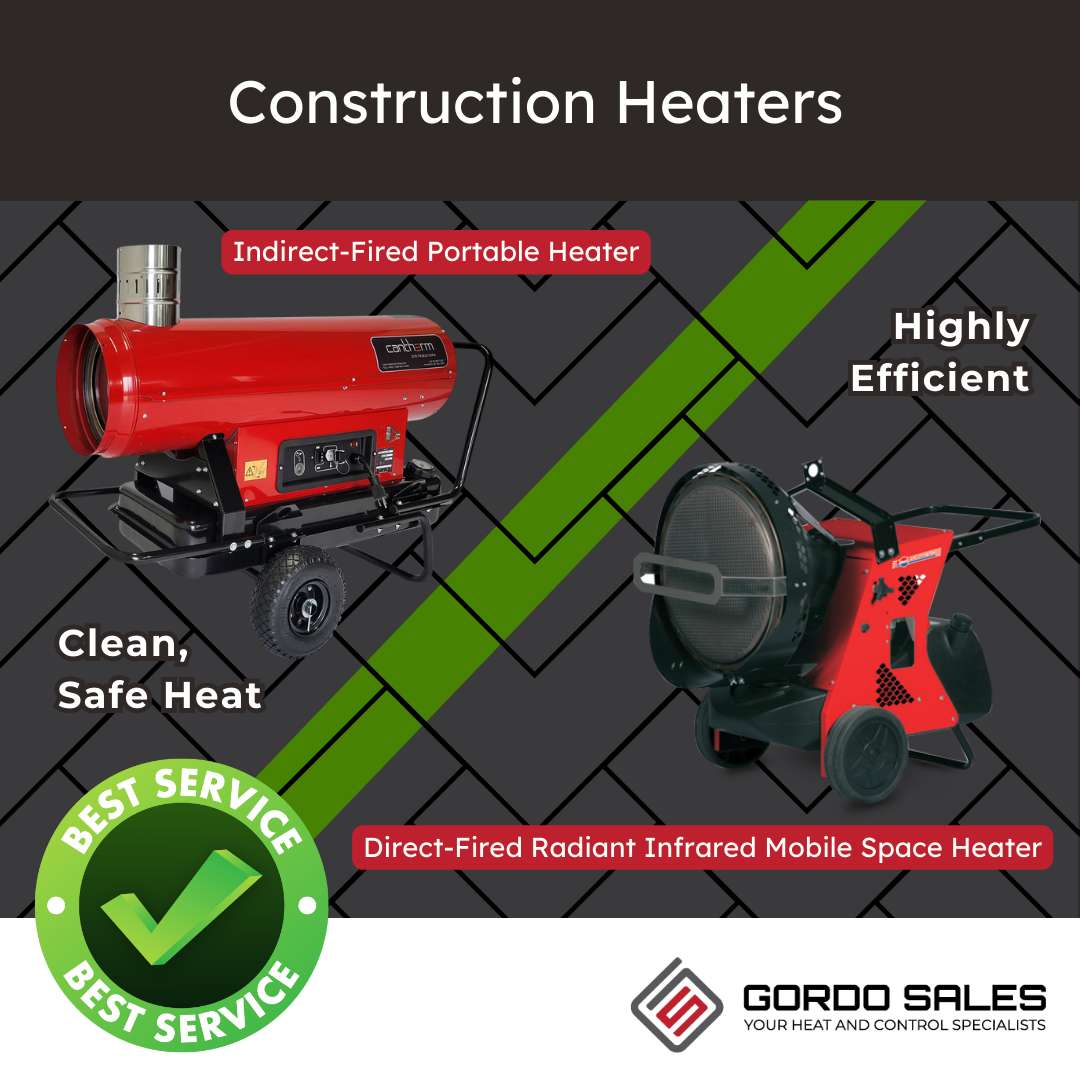
Warmth Where It Counts: Understanding Your Heating Options
As the cold weather rolls in, keeping your construction site operational and comfortable becomes a crucial challenge. Whether you're laying concrete or installing drywall, the right construction heater can make all the difference. Let’s dive into the world of heaters tailored specifically for construction and explore how they can keep your projects on track and your crew safe and productive.
A Heater for Every Site: Exploring the Options
Construction sites vary wildly, and so do the heaters designed to keep them warm. Here’s a rundown of the most common types of construction heaters and where they best fit in:
- Direct Fired Heaters: These powerhouse units are perfect for open areas where high heat output is necessary. They operate by directly exposing the flame to air, pumping out large volumes of warm air quickly. However, they're best used in well-ventilated sites due to the combustion byproducts they emit.
- Indirect Fired Heaters: Need to heat an enclosed space? Indirect fired heaters are your go-to. They keep fumes separate from the heated air, making them ideal for enclosed or populated indoor areas where air quality is a concern.
- Electric Construction Heaters: These are a staple for indoor use where open flames might pose a risk. Electric construction heaters are versatile, emission-free, and perfect for smaller, enclosed spaces or areas where noise needs to be kept to a minimum.
- Hydronic Heaters (Ground Thaw Heaters): For large-scale heating, nothing beats hydronic systems. These units pump heated water through hoses to raise the temperature over vast areas. They’re particularly effective for thawing frozen ground, curing concrete, or any job requiring a gentle, widespread heat.
- Portable Jobsite Heaters: From electric models to those that run on kerosene or diesel, portable heaters for construction are invaluable for their mobility and ease of use. Whether you need to move them between job stations or require heating in different zones, these units can go wherever you need them.
Turning Up the Heat on Productivity and Safety
The benefits of implementing the right heater extend beyond just providing warmth. They play a pivotal role in:
- Maintaining Productivity: Cold hands and stiff machinery can slow down your work. Construction heaters keep your team and your equipment warm, which keeps operations running smoothly and on schedule.
- Ensuring Safety: Proper heating reduces risks like frostbite and hypothermia, and keeps ice from forming on surfaces, thereby preventing slips and falls.
- Improving Material Handling: Many construction materials like paint, plaster, and adhesives require specific temperatures to apply correctly. Heaters ensure that materials stay within optimal temperature ranges, which is crucial for quality results.
Safety First: Tips for Using Heaters on the Jobsite
To make the most of your heating solution while ensuring everyone’s safety, consider the following tips:
- Proper Placement: Always place heaters on stable, non-flammable surfaces. Ensure they are positioned away from combustible materials and in areas where they won’t be knocked over.
- Adequate Ventilation: Especially important for gas, diesel, or kerosene construction heaters. Even in outdoor setups, make sure there's sufficient airflow to prevent the build-up of harmful gases.
- Regular Maintenance: Check your heaters regularly for signs of wear or damage. Keep electrical connections secure and ensure that fuel-fed models are serviced regularly to keep them running safely and efficiently.
Choosing the Right Fit: Tailoring Heating to Your Needs
Selecting the ideal construction heater isn't just about the size or type; it's about understanding the specific requirements of your site. Consider factors like the size of the area to be heated, typical weather conditions, and the power sources available. If you’re working indoors or in densely populated areas, electric or indirect fired heaters are preferable for their safety and low emissions. For extensive outdoor sites, direct fired or hydronic models might be more effective.
Wrapping Up: Stay Warm, Stay Efficient
Investing in the right construction heating solution is not just about comfort—it’s about maintaining efficiency and ensuring your project stays on track, regardless of the weather. With a variety of heaters from electric construction site heaters to robust diesel options, there's certainly a heating solution that fits every need.
Let's Keep the Heat Going
Thinking about upgrading your heating solutions or need advice on the best construction heaters for your next project? Reach out, and let’s make sure your site stays warm, safe, and productive throughout the colder months. Whether you need a compact electric heater for a small indoor job or a heavy-duty diesel construction heater for a large outdoor project, there’s an ideal option waiting for you.